
Phase II - Released in 2024-2025
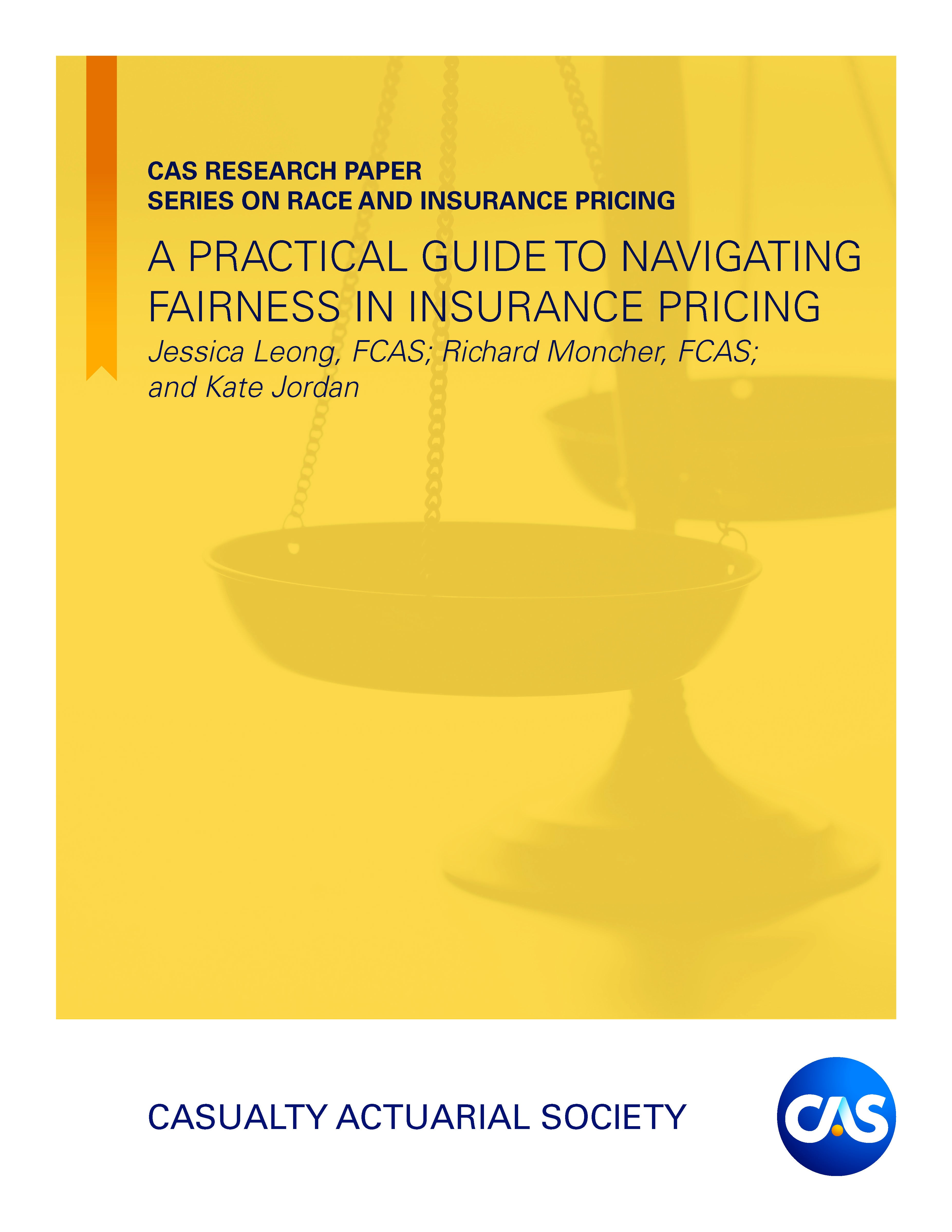
This paper aims to create a framework to help insurers develop models that are more likely to comply with evolving regulations on unfair discrimination and bias.
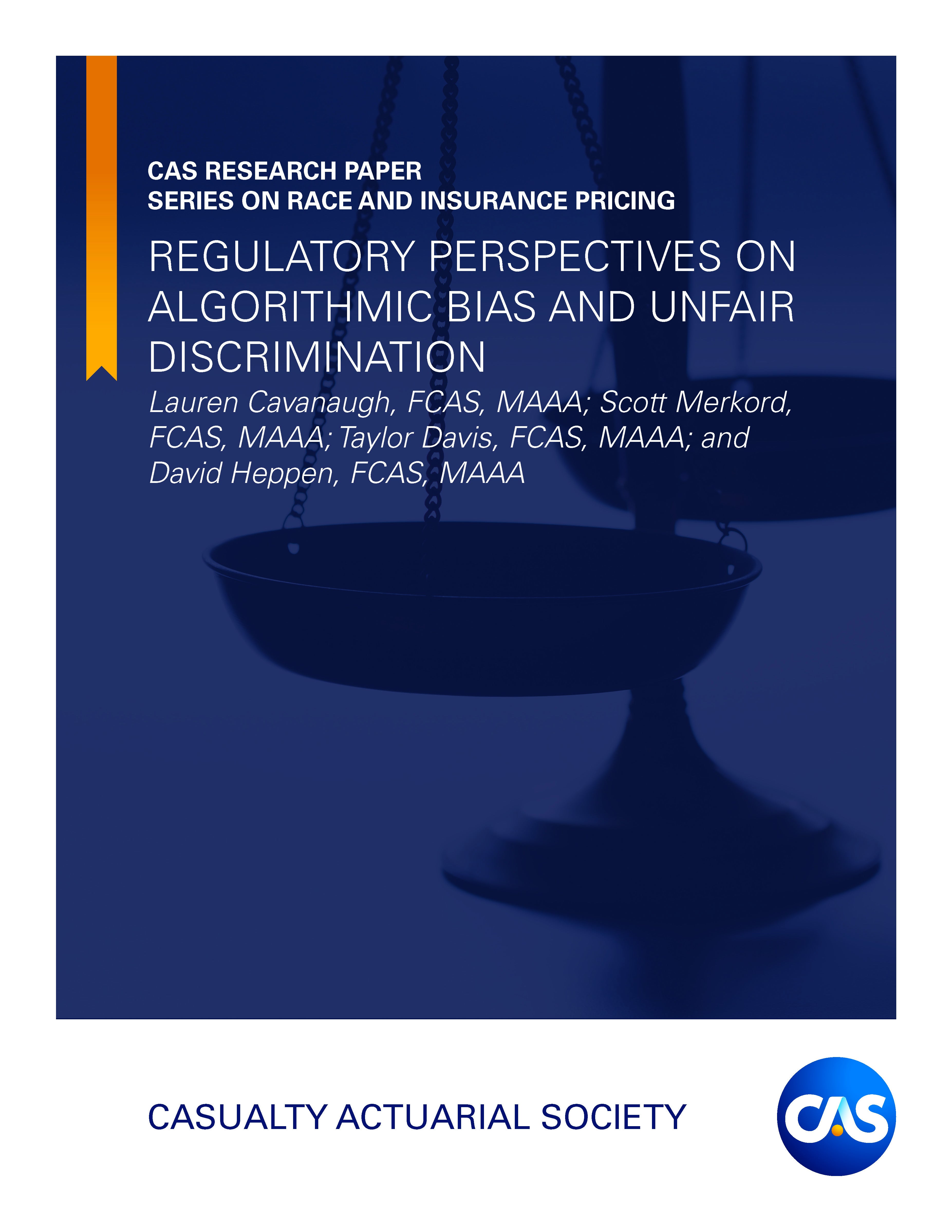
This paper aims to explore regulatory perspectives on algorithmic bias, including U.S. state regulator concerns with current insurance pricing practices, perceptions of fairness testing approaches and plans for future activities.
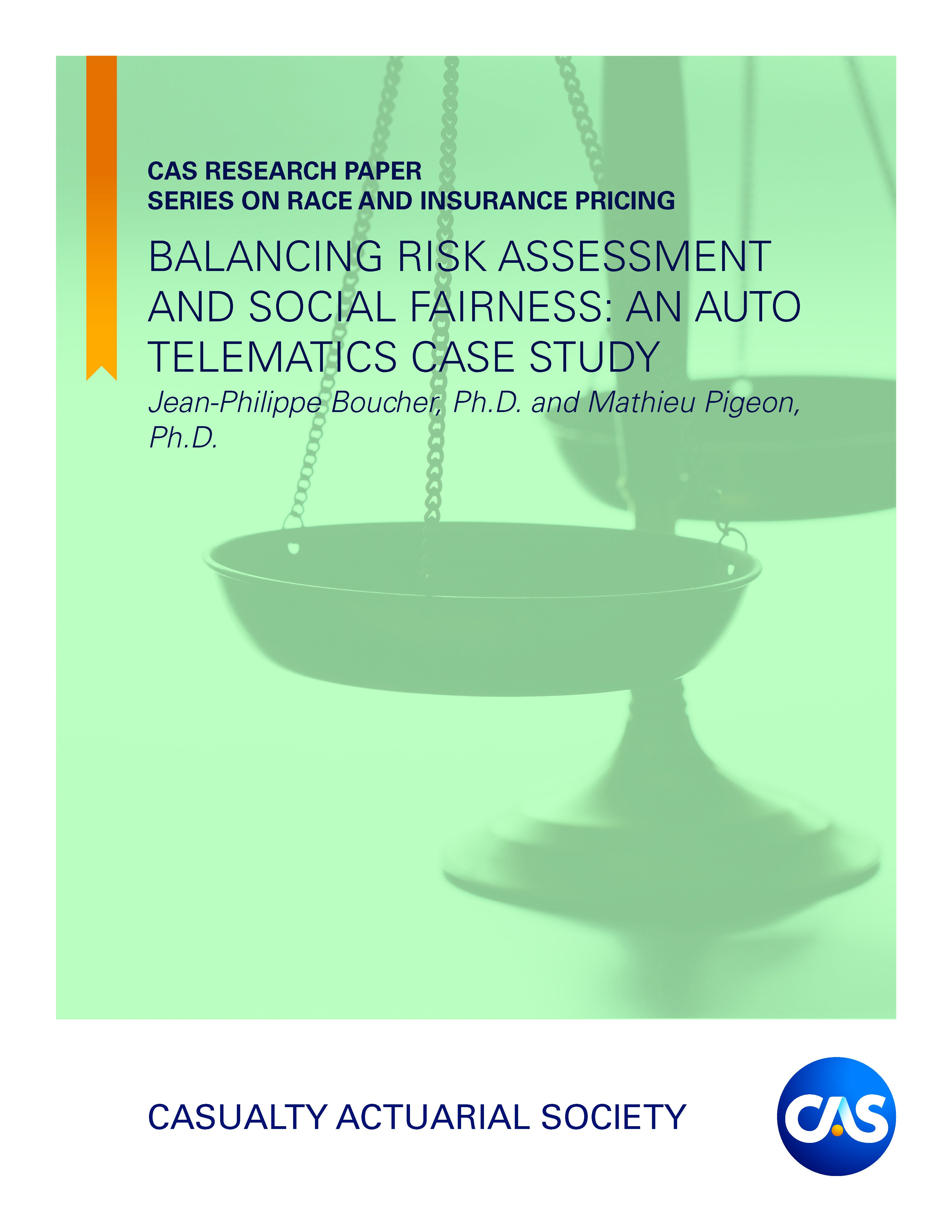
This paper evaluates the potential for telematics or usage-based insurance rating variables to reduce insurers reliance on protected information, (e.g. sex, age), or sensitive information, (e.g. marital status, territory, credit).
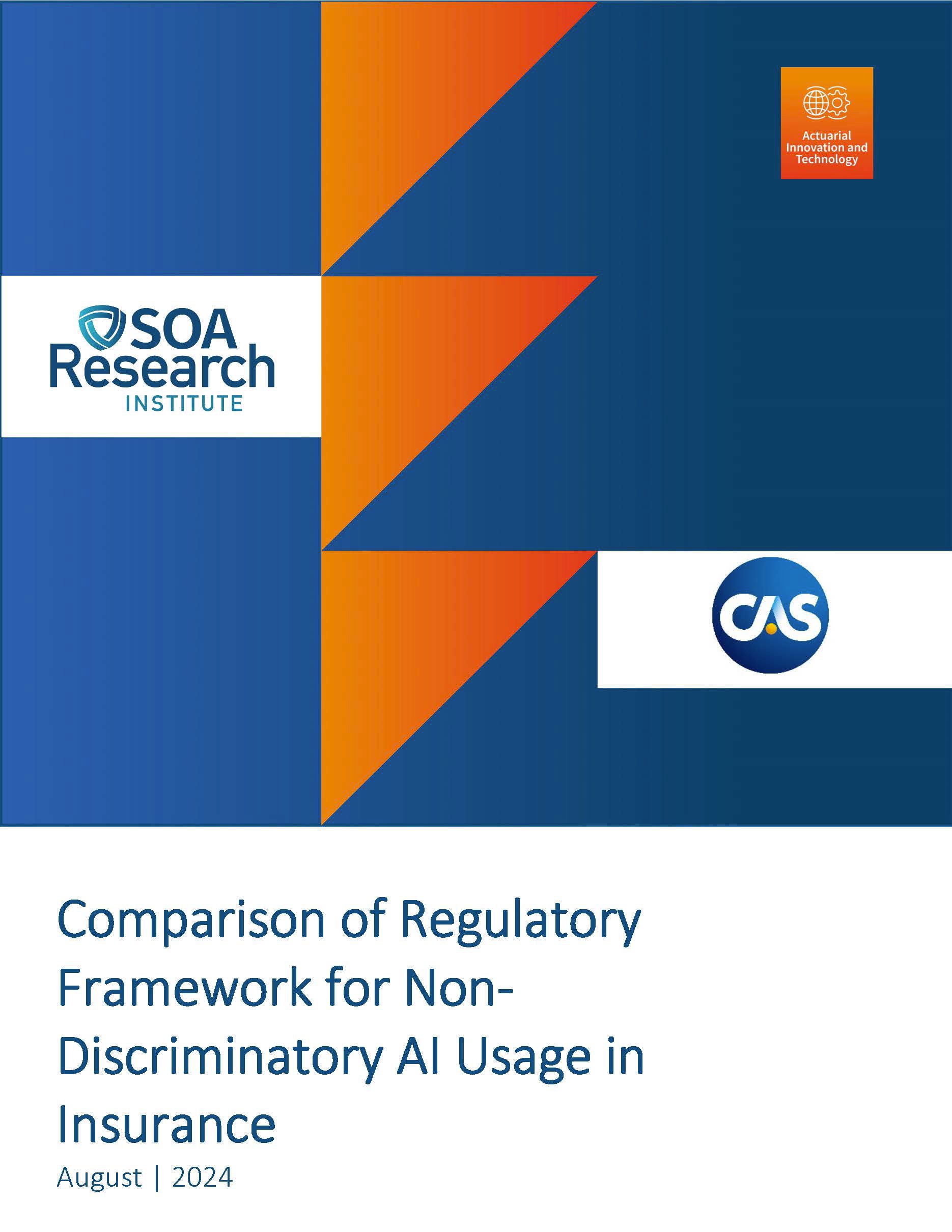
This joint report from the CAS and Society of Actuaries offers a comprehensive overview of the latest and emerging regulatory activities in China, the U.S., Canada, and Europe, focusing on the prevention of discriminatory practices in the use of artificial intelligence (AI) within the insurance industry. It has a particular relevance to our international audiences.
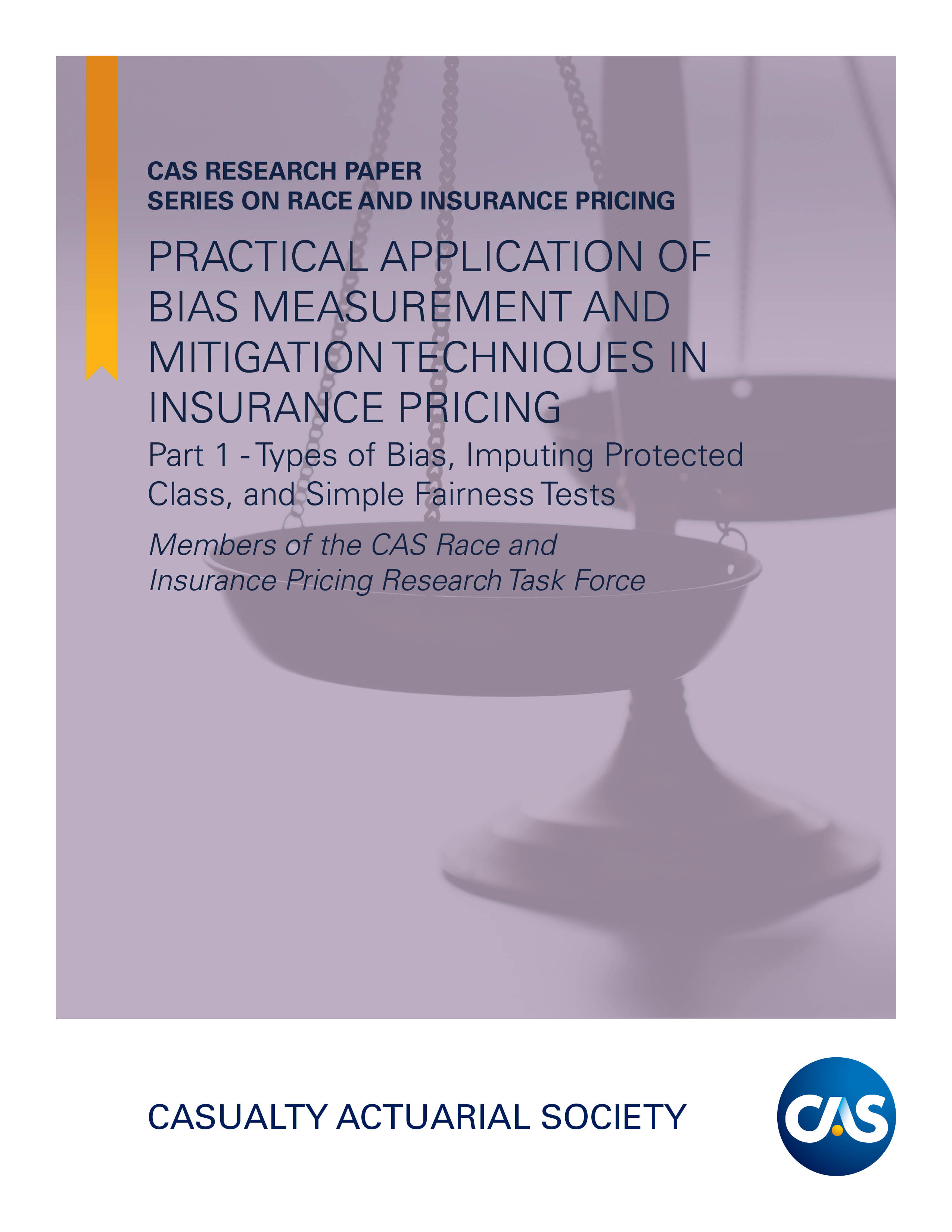
This two-part paper serves as a practitioners guide to applying fairness testing and mitigation methods to actuarial pricing data and models. Part 1 provides an overview of bias types in insurance, introduces imputation methods for protected class labels, and presents simple fairness tests based on established statistical fairness criteria, expanding upon the 2022 "Methods for Quantifying..." paper.
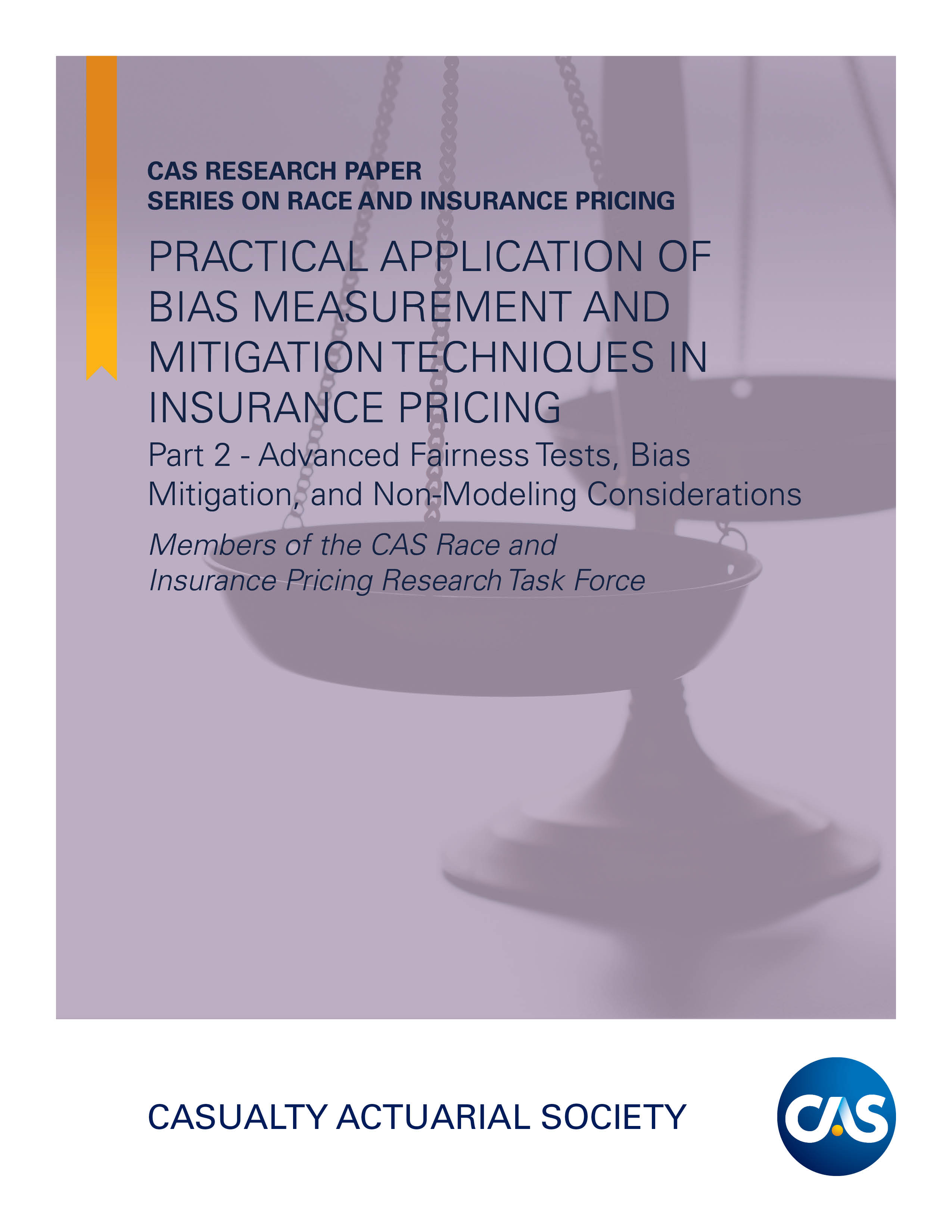

This paper investigates the balance between maintaining accurate risk differentiation and ensuring equitable treatment among various classes of interest when the use of certain rating variables is restricted or prohibited by insurance regulatory law. Using a collection of simulated scenarios, we review the impacts of a spectrum of regulatory approaches intended to improve fairness for a certain class of interest on both that class and an additional class of interest. We also examine the potential impact on a competitive market composed of multiple companies with varying portfolio mixes.
Phase I – Released in 2022
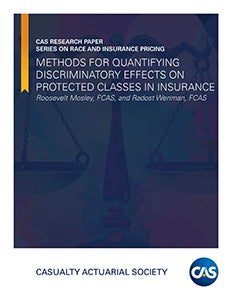
By Roosevelt Mosley, FCAS, CSPA and Radost Wenman, FCAS
As the insurance industry focuses attention on potential racial bias across all practice areas, this paper examines three approaches to defining and measuring fairness in predictive models. It also provides an overview of several bias mitigation techniques that can be performed during the input, modeling, or output phase of a model once a set of fairness criteria has been adopted.
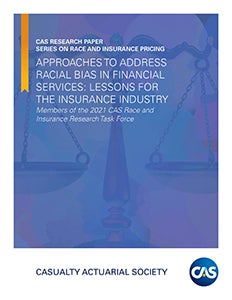
By Members of the 2021 CAS Race and Insurance Research Task Force
This paper examines issues of racial bias in lending practice for mortgages, personal and commercial lending, as well as credit-scoring. It looks at these four areas and describes solutions intended to address any potential bias, which may include government intervention, internal bias testing and monitoring measures, and development of new products to mitigate bias.
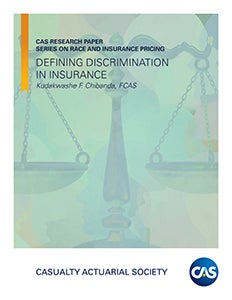
By Kudakwashe F. Chibanda, FCAS
This paper defines several terms that are currently being used in discussions around potential discrimination in insurance – protected class, unfair discrimination, proxy discrimination, disparate impact, disparate treatment, and disproportionate impact – and provides historical and practical context for them. It also illustrates the inconsistencies in how different stakeholders define these terms.
Please see errata for revisions made on September 23, 2022.
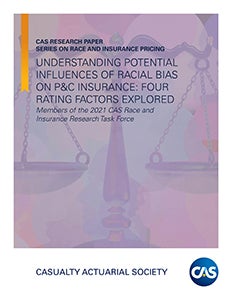
By Members of the 2021 CAS Race and Insurance Research Task Force
This paper examines four commonly used rating factors in personal lines insurance – credit-based insurance score, geographic location, home ownership, and motor vehicle record – to understand how the data underlying insurance pricing models may be impacted by racially biased policies and practices outside of the system of insurance.
Additional Resources
- Check out the Race and Insurance Bundle on UCAS for FREE session recordings from past meetings
- Find Select recordings on the CAS YouTube Channel
Access research produced by CAS members and staff related to Race and Insurance Issues:
- Insurance Rating Variables: What They Are and Why They Matter
- Research from the CAS E-Forum
CAS appreciates the opportunity to partner with and review research performed by other insurance industry organizations.
- National Association of Mutual Insurance Companies (NAMIC): Matching Rate to Risk: Analysis of the Availability and Affordability of Private Passenger Automobile Insurance
Issue Briefs:
- February 2023 - Approaches to Identify and/or Mitigate Bias in Property and Casualty Insurance
- June 2022 - Sourcing Protected Class Information in P&C Insurance
- July 2022 - An Actuarial View of Correlation and Causation - From Interpretation to Practice to Implications
Comment Letters:
- January 2023 – Letter Regarding Draft Data Call on Unintentional Bias in Automobile Insurance
- June 2022 - Presentation for DC DISB Hearing on Unintentional Bias in Underwriting and Rating of Personal Automobile Insurance
- March 2021 - Letter Regarding CO Senate Bill 21-169 "Protecting Consumers from Unfair Discrimination in Insurance Practices"
- May 2021 - Comment Letter regarding NAIC Committee on Race and Insurance Proposed 2021 Charges
- May 2021 - Comment Letter Regarding CO Revised Statute 10-3-1104.9
- November 2020 - Comment Letter to NAIC Special (EX) Committee on Race and Insurance
- December 2020 - Comment Letter to NCOIL Special Committee on Race in Insurance Underwriting
